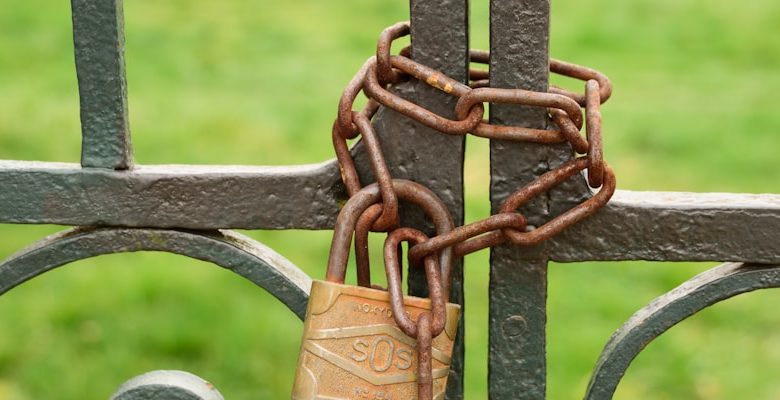The Role of Two-Factor Authentication in Protecting Your Assets

- Understanding the Basics of Two-Factor Authentication
- Why Two-Factor Authentication is Essential for Protecting Your Assets
- The Different Types of Two-Factor Authentication Methods Available
- Common Mistakes to Avoid When Using Two-Factor Authentication
- How Two-Factor Authentication Enhances Security Measures
- Tips for Implementing Two-Factor Authentication Successfully
Understanding the Basics of Two-Factor Authentication
Two-Factor Authentication (2FA) is a security process that requires two different ways of verifying your identity before gaining access to an account or system. This adds an extra layer of security beyond just a username and password, making it more difficult for hackers to gain unauthorized access to your assets. One common example of 2FA is receiving a text message with a code that you must enter after inputting your password.
Why Two-Factor Authentication is Essential for Protecting Your Assets
Two-factor authentication is crucial for safeguarding your valuable assets from unauthorized access and potential security breaches. By adding an extra layer of protection to your accounts, you significantly reduce the risk of cyber attacks and identity theft.
Implementing two-factor authentication can help prevent malicious actors from gaining access to your sensitive information, even if they have obtained your login credentials through methods such as phishing or hacking.
With the increasing frequency of data breaches and cyber threats, it is more important than ever to prioritize the security of your assets. Two-factor authentication provides an additional level of security that can make it significantly harder for hackers to compromise your accounts.
By requiring two forms of verification to access your accounts, such as a password and a unique code sent to your phone, you can ensure that only authorized individuals are able to log in. This added security measure can help you rest assured that your assets are well protected.
The Different Types of Two-Factor Authentication Methods Available
Two-factor authentication methods add an extra layer of security to protect your assets. There are several types of two-factor authentication methods available to choose from, each with its own unique benefits. One common method is SMS authentication, which involves receiving a code via text message to verify your identity. Another popular method is using a mobile authenticator app, which generates a code that refreshes every few seconds for added security. Additionally, biometric authentication methods, such as fingerprint or facial recognition, are becoming more widely used for their convenience and reliability. By utilizing a combination of these different two-factor authentication methods, you can significantly enhance the security of your online accounts and protect your valuable assets from unauthorized access.
Common Mistakes to Avoid When Using Two-Factor Authentication
When using two-factor authentication, there are some common mistakes that you should avoid in order to maximize the security of your assets. One of the most frequent mistakes is using the same password for both factors. It is crucial to use unique passwords for each factor to enhance the protection of your accounts.
Another mistake to avoid is sharing your authentication codes with others. Two-factor authentication is designed to be a personal security measure, so sharing your codes compromises the security of your accounts. Keep your codes confidential to prevent unauthorized access.
Additionally, failing to update your contact information associated with two-factor authentication can lead to issues with accessing your accounts. Make sure to regularly review and update your contact details to ensure a seamless authentication process.
Using an unsecured Wi-Fi network to receive authentication codes is another common mistake that can compromise the security of your accounts. Make sure to use a secure network to prevent interception of your codes by malicious actors.
Lastly, failing to enable two-factor authentication on all of your accounts that offer this security feature is a mistake that can leave your accounts vulnerable to cyber attacks. Take advantage of two-factor authentication wherever possible to add an extra layer of security to your online accounts.
How Two-Factor Authentication Enhances Security Measures
Two-factor authentication is a crucial security measure that enhances the protection of your assets by adding an extra layer of security beyond just a password. By requiring two different forms of identification before granting access, two-factor authentication significantly reduces the risk of unauthorized access to your accounts and sensitive information.
One of the primary ways in which two-factor authentication enhances security measures is by adding an additional step to the login process. In addition to entering a password, users must also provide a second form of verification, such as a code sent to their mobile device or generated by an authentication app. This means that even if a hacker manages to obtain a user’s password, they would still need the second factor to gain access.
Furthermore, two-factor authentication helps protect against phishing attacks, where cybercriminals attempt to trick individuals into providing their login credentials. Even if a user falls for a phishing scam and unwittingly gives away their password, the hacker would still be unable to access the account without the second authentication factor.
Additionally, two-factor authentication can also help prevent brute force attacks, where hackers use automated tools to try countless password combinations until they find the correct one. With two-factor authentication in place, even if a hacker manages to guess the correct password, they would still be blocked from accessing the account without the second form of verification.
Tips for Implementing Two-Factor Authentication Successfully
Implementing two-factor authentication successfully is crucial in enhancing the security of your assets. Here are some tips to help you effectively set up and manage this additional layer of security:
- Ensure to choose a reliable two-factor authentication provider that offers a user-friendly interface and seamless integration with your existing systems.
- Train your employees on how to use two-factor authentication properly, including the importance of keeping their second factor secure.
- Regularly review and update your two-factor authentication settings to address any potential vulnerabilities or changes in your security needs.
- Consider using multiple forms of authentication for added security, such as biometric verification or physical security keys.
- Monitor your two-factor authentication logs for any suspicious activity and take immediate action if any unauthorized access attempts are detected.
- Communicate the benefits of two-factor authentication to your stakeholders and encourage them to enable this feature to protect their accounts and sensitive information.
By following these tips, you can ensure that your two-factor authentication implementation is successful and effectively safeguards your assets from unauthorized access.



